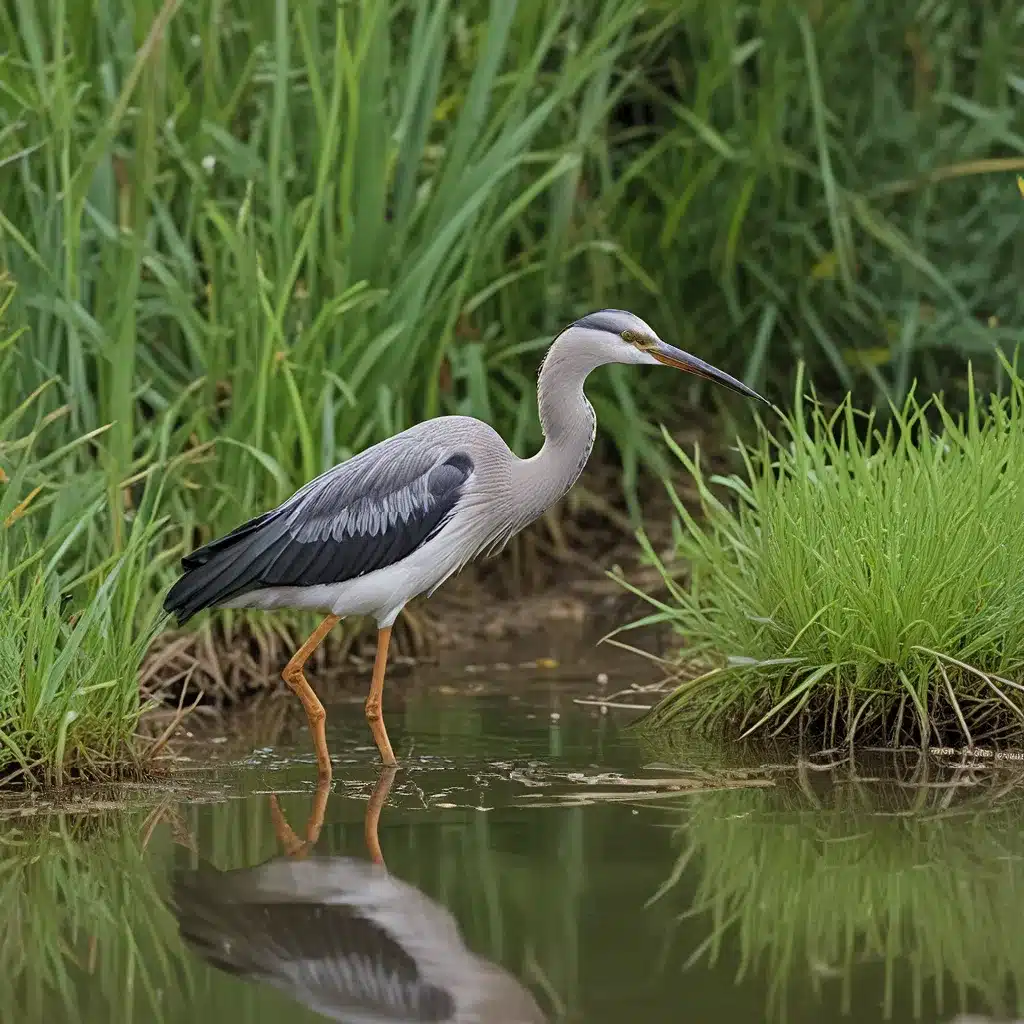
Discovering the Enchanted World of Wetlands
Have you ever wondered where those majestic wading birds like herons and egrets call home? Well, my friend, the secret lies in the enchanting wetlands – those lush, watery oases that dot our landscapes. These unique ecosystems aren’t just a haven for our feathered friends, but also a treasure trove of biodiversity that we must work to protect.
Let’s dive in and uncover the fascinating relationship between wetlands and the exotic species that thrive within them. From the sprawling Everglades to the hidden gems scattered across North America, these vibrant habitats are truly the lifeblood of our avian wonders.
The Everglades: A Wetland Wonderland
When you think of wetlands, the Everglades in Florida likely come to mind. This vast, swampy expanse is a true marvel, boasting an incredible array of wildlife that has captured the imaginations of people around the world. The National Wildlife Federation describes the Everglades as a “wetland wilderness” that serves as a crucial habitat for countless species, including the iconic wading birds that grace its waters.
As I wandered through the Everglades, the sights and sounds were nothing short of mesmerizing. Towering cypress trees draped in Spanish moss stood watch over the meandering waterways, while the calls of herons, egrets, and other wetland denizens echoed all around. It’s easy to see why this place is revered as one of the most unique and important wetland ecosystems on the planet.
The Vital Role of Wetlands
But the Everglades is just one example of the incredible wetlands that are found across North America. These diverse habitats, from coastal marshes to inland swamps, play a vital role in supporting the delicate balance of our ecosystems. As the U.S. Geological Survey explains, wetlands are “one of the best known functions of wetlands is to provide a habitat for birds” – a sentiment that rings true across the continent.
Wetlands offer a rich smorgasbord of resources for our feathered friends, from the lush vegetation that provides nesting sites to the abundance of invertebrates and small vertebrates that make up their diets. And for many species, these wetland havens are a crucial stopover during their long, migratory journeys, offering a chance to refuel and rest before continuing on to their final destinations.
But the importance of wetlands extends far beyond just the birds. These dynamic ecosystems also play a vital role in flood control, water filtration, and carbon sequestration – making them essential for the overall health of our planet. It’s no wonder that wetlands have been the subject of increasing conservation efforts in recent decades.
The Plight of Wetland-Dependent Birds
Unfortunately, despite the recognized importance of wetlands, these habitats have faced significant threats over the years. The U.S. Geological Survey notes that between 1780 and 1980, the amount of wetlands in the contiguous United States decreased from 11% to just 5% – a staggering loss that has had devastating consequences for the birds that depend on them.
As wetlands have been drained, filled, or degraded, many wetland-dependent bird species have seen their populations plummet. In fact, the EPA reports that “about one-half of the 188 animals that are federally designated as endangered or threatened are wetland dependent” – a sobering statistic that underscores the fragility of these ecosystems and the species that call them home.
The impact of wetland loss has been particularly acute for migratory birds, which rely on a network of stopover sites and wintering grounds to survive their epic journeys. When these critical habitats are lost or degraded, the consequences can be devastating, leading to declines in both population numbers and breeding success.
Preserving Wetlands for the Future
Fortunately, the tide is starting to turn, and there is renewed focus on the importance of preserving and restoring wetlands. Initiatives like the North American Waterfowl Management Plan, the U.S. Shorebird Conservation Plan, and the Important Bird Areas Program are all working tirelessly to identify and protect the most vital wetland habitats – not just for the birds, but for the countless other species that depend on them.
These efforts are spearheaded by a diverse array of partners, including government agencies, conservation organizations, and dedicated citizen scientists. By working together, they are able to leverage resources, share knowledge, and develop innovative strategies to safeguard these precious ecosystems.
One key component of these initiatives is the emphasis on public-private partnerships. The EPA explains that “the resources of public and private organizations in North and South America must be combined, coordinated, and increased in order to achieve success in conserving bird populations in this hemisphere” – a sentiment that underscores the importance of collaboration in the face of such daunting challenges.
A Future Where Wetlands and Waders Thrive
As I reflect on my time exploring the Everglades and learning about the vital role of wetlands, I can’t help but feel a sense of both awe and determination. These incredible habitats are truly the lifeblood of our planet, supporting a dazzling array of species and providing invaluable ecosystem services.
And when it comes to the wading birds that grace these wetlands, the stakes couldn’t be higher. Their very survival depends on the conservation and restoration of these fragile environments. But with the collective efforts of dedicated organizations, passionate individuals, and forward-thinking policies, I believe we can create a future where wetlands and waders thrive.
So, let’s keep exploring, learning, and advocating for these precious ecosystems. After all, the health of our wetlands is inextricably linked to the well-being of the exotic species that call them home. By preserving these vital habitats, we’re not just protecting the birds – we’re safeguarding the delicate balance of our entire planet.

